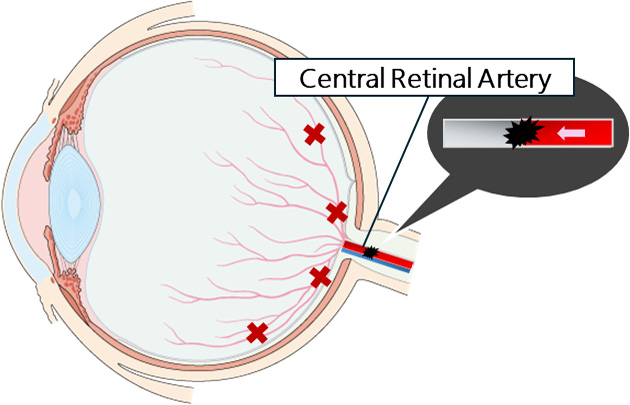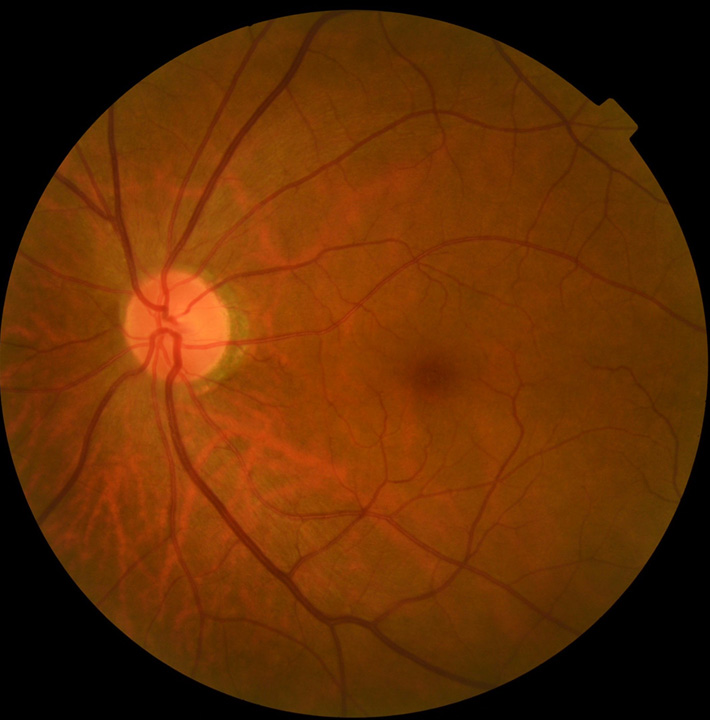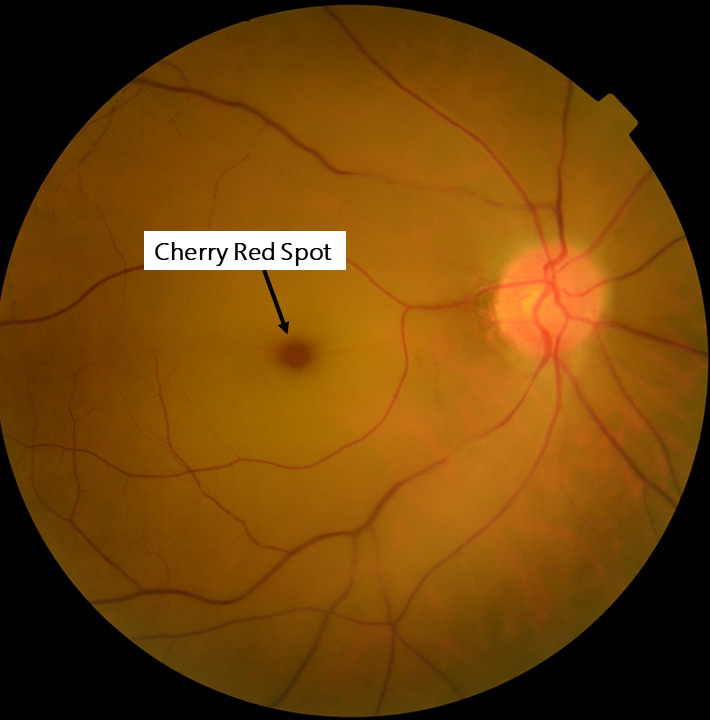CRAO (Central Retinal Artery Occlusion) is a form of a stroke in the eye.
The retina is a membrane that spreads to the back of the eyeball and plays a very important role in seeing things. The retinal artery supplies oxygen and nutrients to the retina. Retinal artery occlusion is a disease in which the retinal artery becomes blocked for one reason or another. The most serious case is when the main artery to the retina becomes blocked, which is called Central Retinal Artery Occlusion (CRAO). Like a stroke, CRAO typically occurs when a piece of plaque (a vascular lump) that has formed on the blood vessel wall closer to the heart than the retinal artery, breaks off and travels into the retinal artery. When the central retinal artery becomes blocked, the retina loses its supply of oxygen, causing a sudden loss of vision. If the state of oxygen deprivation (ischemia) continues for more than 4-6 hours, retinal cells undergo irreversible changes, that is, cell death. After the blood vessels are blocked, blood flow is restored (reperfusion) over time, but the reperfused blood contains many substances which damage the retina. Due to cell damage caused by ischemia immediately after the onset and further cell damage caused by reperfused blood, severe visual impairment becomes fixed within a few days to a few weeks of onset. Current science cannot restore lost retinal nerve cells, and in most CRAO cases visual impairment is permanent.
CRAO (Central Retinal Artery Occlusion)

In CRAO, the main pathway of the retinal artery becomes blocked, preventing blood from reaching the entire retina.
Diagnostic Findings

Normal fundus photo (opposite eye)

Fundus photo immediately after the
onset of CRAO (21 hours later)
When observing the fundus immediately after onset, the entire fundus appears whitish due to the spread of edema caused by ischemia. The central part of the retina is red as usual because there is no edema in the inner layer of the retina and is called a cherry red spot. The blood flow through arteries and veins is also interrupted.
Photo Courtesy:
Left Photo: Dr. Hanako Ohashi Ikeda, Department of Ophthalmology and Visual Sciences, Kyoto University.
Right Photo: Dr. Hanako Ohashi Ikeda, "Retinal Artery Occlusion." In Current Therapy in Eye Diseases 2019-2021, Nankodo Co., Ltd.
Typical symptoms of CRAO are
- Sudden and significant loss of vision
- Affecting only one eye
- No pain
Like a stroke in the brain, CRAO is a medical emergency in which time is of the essence. However, because CRAO is not painful like a heart attack and patients can still see with their unaffected eye, they may not realize it is an emergency and may delay seeking medical attention.
Currently, there is no evidence-based treatment to improve visual function for CRAO patients.
Today’s standard treatments aim to unclog the blocked artery and restore blood flow. These include eye massage, anterior chamber paracentesis (a treatment to drain fluid from the eye), and eye drops to reduce intraocular pressure. Treatment with thrombolytic drugs is sometimes performed as well. But unfortunately, the effectiveness of these treatments for improving vision has not been proven.
CRAO is a disease in which blood vessels become clogged, so like heart attack and stroke, it is often seen in elderly people, especially those with diseases such as high blood pressure, diabetes, arteriosclerosis, and high cholesterol.
Learn more about CRAO from the American Academy of Ophthalmology.




